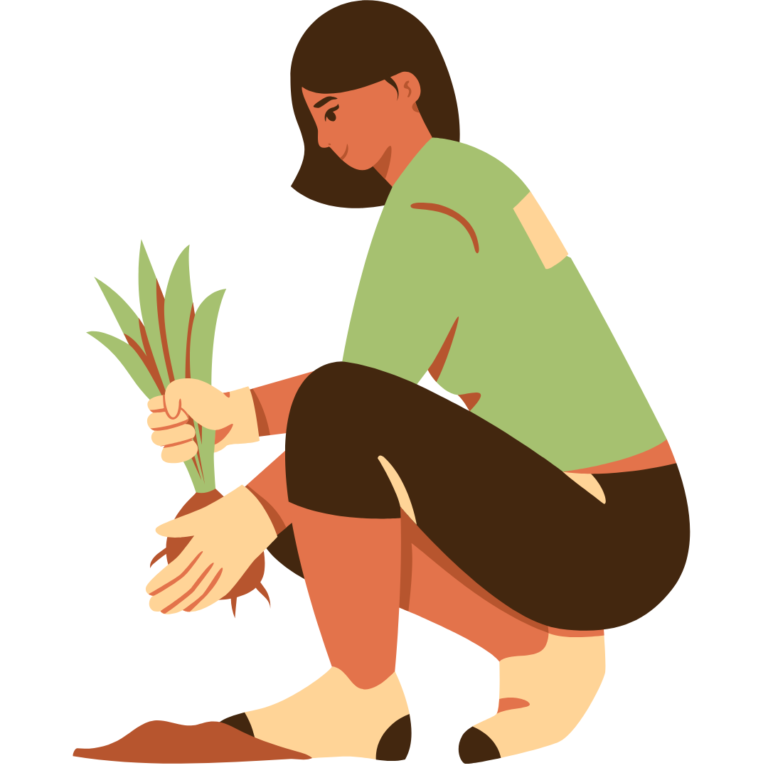Since stress and anxiety appear to be a fact of life, effective ways to relax and achieve good mental well-being are quite important. One surprisingly powerful method that has gained popularity in recent years is indoor gardening. What once used to be just a pastime has now developed into a kind of therapy that offers multiple benefits for mental health. This article will explore how indoor gardening can enhance mental wellness, providing psychological, emotional, and physical benefits.
The Science Behind Plant Therapy
Plants have long been used in healing practices across various cultures. From ancient herbal medicine to the tranquil beauty of Japanese Zen gardens, plants have a history of providing therapeutic benefits. In recent years, scientific study has validated the growing popularity of indoor gardening as a modern therapeutic tool. In a research study, it was reported that all studies saw benefits of reduction of depression and anxiety symptoms and an increase of attentional capacity and self-esteem with gardening-based intervention.
Restoration Theory
The attention restorative theory is one of the ideas that explains how gardening affects our mental health. The theory states that mental health can be improved by looking at nature. According to the theory, being in natural settings promotes easier brain function, which enables the brain to heal and regain its capacity for focused attention. The natural environment must provide an escape from day-to-day activities, capture your attention, and you must be able to feel immersed and enjoy the environment.
Psycho-Physiological Stress Reduction Theory
The other concept that helps explain gardening’s impact is the psycho-physiological stress reduction theory. Roger Ulrich cited that humans are wired to find natural, non-threatening stimuli to be calming and that these stimuli have an instantaneous effect on emotion and set off a parasympathetic nervous system response (the ability to relax) that promotes feelings of well-being and relaxation.
How to Get Started with Indoor Gardening
● Choosing the Right Plants: Novice gardeners would wish to start off with some easy-to-care-for plants. In most cases, it would be best to choose succulents, spider plants, or pothos as a beginner. Each of these plants has specific benefits and care requirements that make them an ideal starting point for novices.
● Setting Up Your Space: Make sure your plants have the proper environment. The right light, temperature, and humidity are important. Shelves and hanging planters can be used to make maximum use of limited space and to create a visual treat
● Care and Maintenance: Develop a routine regarding watering, fertilizing, and pruning your plants. General care on a regular basis would not only help the healthy growth of the plants but will also provide an everyday respite through a time for mindfulness and relaxation.
Integrating Plant Therapy into Daily Life
● Establishing a Routine: Incorporate plant care into your daily or weekly schedule. Whether it’s a few minutes in the morning or a dedicated time on weekends, regular engagement with your plants can become a cherished part of your routine.
● Creating a Green Sanctuary: Design your indoor spaces to promote relaxation and well-being. Aesthetically pleasing arrangements and the presence of greenery can transform your home into a calming sanctuary.
Conclusion
Indoor gardening is not a mere hobby but an activity that goes a long way in affording therapeutic value to enhance mental well-being. Reducing stress, providing a way of practicing mindfulness, and furnishing outlets for creative and emotional expression make plants a simple yet powerful way to support mental health.
Written By: Amari Bell, Mental H2O Youth Resource Writer
References
“Attention Restoration Theory: A Systematic Review | ECEHH.” European Centre for Environment and Human Health | ECEHH, 25 Mar. 2024, www.ecehh.org/research/attention-restoration-theory-a-systematic-review/#:~:text=Attent ion%20Restoration%20Theory%20(ART)%20(,in%20’directed%20attention%20fatigue’.
Clatworthy, Jane, et al. “Gardening as a mental health intervention: a review.” Mental Health Review, vol. 18, Nov. 2013, p. 215. https://doi.org/10.1108/MHRJ-02-2013-0007.
Page, Mathew. “Gardening as a Therapeutic Intervention in Mental Health.” PubMed, vol. 104, no. 45, Dec. 2008, pp. 28–30. pubmed.ncbi.nlm.nih.gov/19051686.


